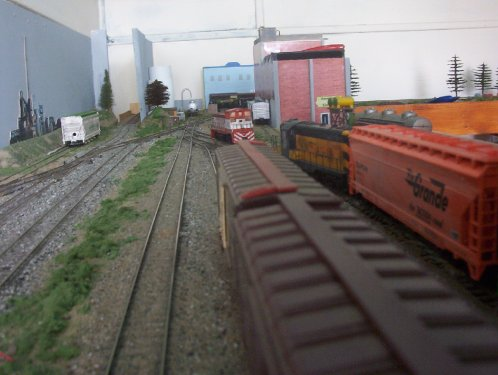Everything on model trains, model railroads, model railways, locomotives, model train layouts, scenery, wiring, DCC and more. Enjoy the world's best hobby... model railroading!
4 Tips for Better Rail Yard Design
 When it comes to rolling stock and locomotives, most of us own more than we could ever operate at one time. One solution is to store your excess trains in their boxes or put them on display in cabinets or on shelves. The other solution is to store all your extra engines and cars on yard tracks either as part your layout operation, or on separate “non-operational” tracks away from your layout.
When it comes to rolling stock and locomotives, most of us own more than we could ever operate at one time. One solution is to store your excess trains in their boxes or put them on display in cabinets or on shelves. The other solution is to store all your extra engines and cars on yard tracks either as part your layout operation, or on separate “non-operational” tracks away from your layout.
If you have plans to build a rail yard then here are some considerations:
1. Try to integrate your staging track with it linked to the main track at each end.
If there is sufficient space for two staging tracks, then better still. The intent of a yard (other than for storage) is to gather inbound cars for redistribution, and to assign them to trains bound for the intended destination.
Although the easy way is to just lift a car off the track and plonk it down where you want it, that takes the fun out of solving the puzzle. Real railroads can’t do that, so taking the easy option defeats the whole purpose of operating model trains.
To rearrange cars properly requires enough yard space to efficiently move cars without physically lifting them off the track.
2. Try not to squeeze too many tracks into a cramped space.
The problem is; when the tracks are positioned to close together it might cause a “domino effect” when a car derails.
3. Always include an escape route so that locomotives don’t get trapped on track spurs at the REAR of a line of freight cars.
4. Keep your yard configuration simple.
A complicated design could trigger problems even with the simplest mistake.
Overall; where possible a yard should be easy to get rail traffic in and out of. Keep the track configuration simple and the train movements will be simple too.


















Leave a Reply